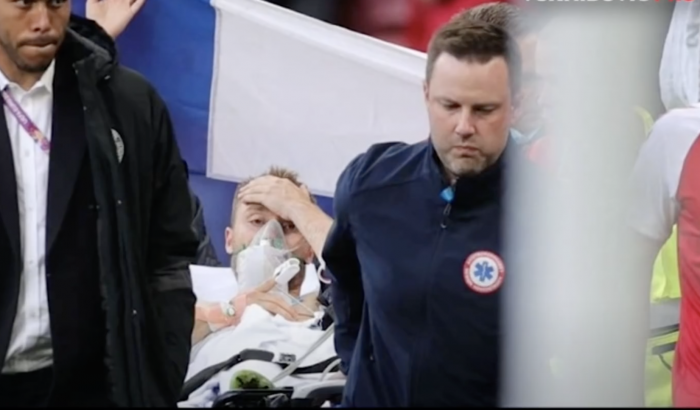Making a difference as a medical professional – The case of Christian Eriksen
Actors, singers and athletes love to perform before an audience. Medical professionals don’t!
How well would YOU have done if you were in a similar situation as the colleagues who resuscitated Christian Eriksen while millions of spectators were watching?

Performing under stress
This was one of the questions that I asked myself last week while watching the television broadcast of the game between Denmark and Finland.
I vividly remember an incidence of an injured soccer player with a large cut who was surgically treated on the sideline. The TV cameras zoomed in on the bleeding wound to display every stitch of the needle. Spectators were watching on the large video wall of the stadium and in front of the television screen all around the globe. All this in full HD!
I have never seen a surgeon who shivered more! No question - the stress associated with so many watching and the fear of making mistakes in front of a huge crowd influences our performance – usually to the disadvantage of the patient.
By the way this is also the reason why I reject “live transmissions” of procedures at conferences. I participated in such events several times as an operator in the past. Believe me, they were never “stress free”.
Quick decisions and the defibrillator
But let me come back to the incidence during the game of Denmark against Finland:
The headline of an article read: The defibrillator saved Eriksens life”.
I would strongly argue against this. It was the decision to use the defibrillator and to perform chest compression “just in time” that saved his life. Every second counts! The medical team makes the difference not the instruments!
But what are the two most important factors that lead to a good outcome?
It is the availability of the emergency equipment (in particular a defibrillator) in the stadium and the experience and training of the medical team.
Preventing SCD – What is important?
The Fédération Internationale de Football Association (FIFA) issues a handbook for medical emergencies on the field. In this document top experts state that a defibrillator MUST be available for the players. Similar is true during practice sessions. This was not always the case in the past.
But, the committee also emphasizes the importance of training. Doctors on the field are often traumatologist or sports medicine specialists with little experience in resuscitation. But even for cardiologists, anesthetists and those are more frequently confronted with cardiac arrest it is important to keep up with the latest guidelines and to practice.

Do YOU have the Competence?
In this respect we can learn from the airline industry where every crewmember is required to participate in ground flight training in a simulator at least once a year.
When was your last training? When did you last perform chest compression or defibrillation and are you ready to answer the following question?
When would you start chest compression?
A) If you don’t feel a pulse
B) If the patient is unresponsive with absent or abnormal breathing
C) When the patient turns blue
D) The ECG shows asystole
The correct answer is B! Don’t wait for an ECG and don’t check for the pulse!

What is the key message?
If you were uncertain or got the question wrong – maybe it is wise if you check out the latest guidelines and refresh you knowledge. After all competence is your biggest asset and can save lives.
PS: We have a free 3 part video course with 12 valuable learning tips for medical professionals Link: https://www.123sonography.com/12-top-learning-tips-medical-professionals
PPS: Was CPR performed in Eriksen according to guidelines? What is your take? Post your thoughts below...

